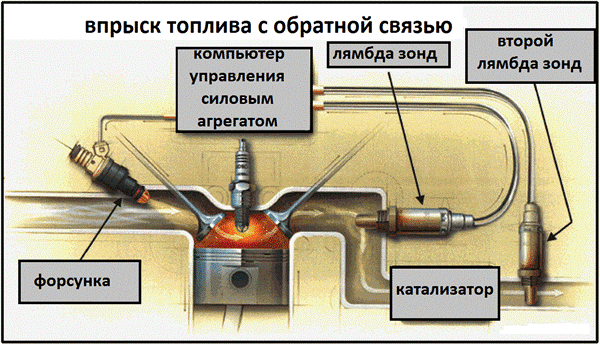
Lambda probe - what is it responsible for and what are the symptoms of its damage?
Content
For all those who consider the lambda probe a fairly new element of car equipment, we have sad news - the oldest copies of these car accessories were installed more than 40 years ago. Since then, attention to exhaust gas toxicity standards has increased dramatically, so the design of lambda probes and their number in cars have changed. At the beginning it is worth explaining what a lambda probe is and how it works.
What is a lambda probe and how does it work?
In simple words, a lambda probe is a tiny element that is somewhat reminiscent of a spark plug. An electrical wire is connected to it, which transmits information about the current values to the drive controller. It changes under the influence of the composition of the exhaust gases in the exhaust system. Most often it is mounted in the area between the exhaust manifold and the catalytic converter.
What is the lambda probe for?
As the name implies, it is about determining the ratio of air to the amount of fuel injected. A properly working lambda probe allows you to more accurately dose the fuel dose by reducing or increasing the injection time.
What else affects the lambda probe?
The composition of the air-fuel mixture affects the operation of the catalytic converter. It is determined by the so-called catalyst conversion, i.e. the possibility of its purification of exhaust gases by carrying out catalytic processes. In cars that did not use a lambda probe, the catalyst efficiency reached 60%. Now these devices provide almost 95% efficiency of neutralization of harmful compounds of nitrogen or carbon.
How to check the health of the lambda probe?
This is especially noticeable in the amount of fuel burned. A properly functioning lambda probe works in three ranges, sending a signal using different voltages.
If the composition of the air-fuel mixture is optimal, the device generates a signal of 1, which does not change the operation of the controller in terms of fuel injection. However, in the case of an increase in the percentage of oxygen in the exhaust gases (4-5%), the voltage supplied by the element before the catalyst decreases. The controller "reads" this as the need to increase the amount of fuel injected by increasing the fuel injection time.
At the time of a significant decrease in the percentage of oxygen in the exhaust gases, the lambda probe increases the voltage, which leads to a decrease in the amount of fuel supplied. Exhaust composition indicates a rich mixture containing too much fuel.
Symptoms of a damaged lambda probe - how to recognize them?
A sign of a damaged oxygen sensor is increased fuel consumption, regardless of driving style. In many cases, this is even twice as high as in normal conditions. This symptom is difficult to notice without looking at the on-board computer. Short driving distances also do not contribute to this, because they do not consume too much fuel.
Another sign of damage to the lambda probe is uneven engine operation. At the time of a spontaneous change in the speed values, you may suspect that the lambda probe will be checked as soon as possible. You can't do without a visit to the diagnostic station.
On diesel engines, black smoke from the chimney will also increase, especially when accelerating hard. At such times, the dose of fuel is the highest, so it is also likely to see an alarming black cloud of smoke.
The last visible sign of a malfunction of the lambda probe is the appearance of the "check engine" light on the display. Although this often means a lot of errors, if the lambda probe is damaged, a yellow icon with the engine designation is a symptom.
Lambda probe - symptoms of HBO
Generations of type II and III gas installations directly used the signal sent by lambda probes. However, with the advent of the XNUMXth generation of sequential plants, the situation has changed. The gas controller directly uses the sensors responsible for the operation of gasoline injectors, therefore it does not directly take a signal from the lambda probe. However, as you know, the unit's computer uses this signal to determine the correct air-fuel mixture.
So what are the symptoms of a damaged lambda probe in gas powered vehicles?
First of all, combustion intensifies, but a characteristic smell of gas is also noticeable. The reason is to send an ever lower output voltage at the cost of slow sensor damage and the computer increasing the metered fuel. This does not significantly affect the design of the engine, but can lead to increased fuel consumption and air pollution.
Replacing a damaged lambda probe
Since the operating conditions of the probe are very extreme and difficult, over time it can fail. Therefore, you need to know not only how to check the lambda probe, but also how to replace it and which model to choose. This element can be located directly in front of the catalytic converter and have a plug located in the center tunnel or directly behind the intake manifold. After finding, the most important thing is to buy an identical copy (if the damaged one was branded and of high quality). Cheap substitutes do not offer the desired parameters and are not durable.
The lambda probe is a very important element that is associated with the operation of the engine. Therefore, when replacing a lambda probe, always choose a model with the same dimensions and adapted to the specific engine model. Do not forget to choose branded and high-quality components so as not to complicate the operation of the car with another replacement.
